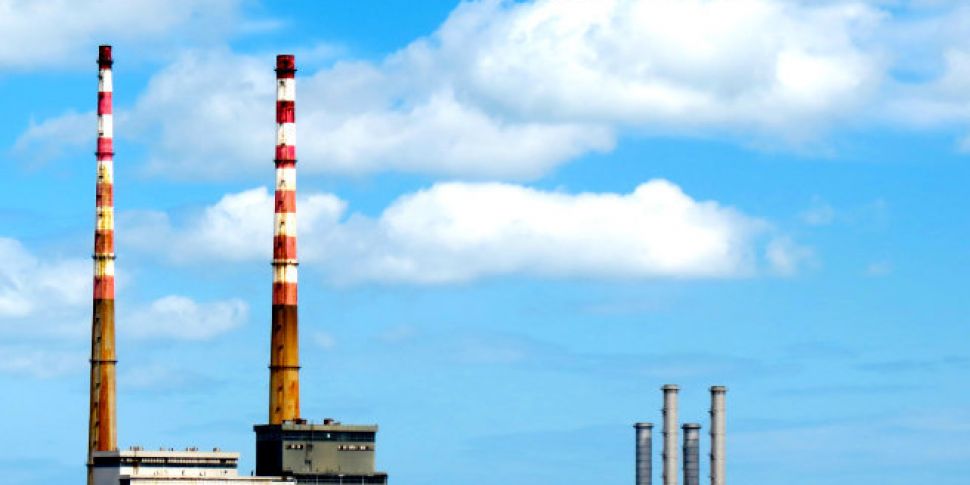The Poolbeg incinerator begins production today - twenty years after the project was initially proposed.
In an interview this morning, Managing Director of Covanta John Daly confirmed the waste-to-energy plant will take its first delivery of waste today. Generally, this covers 'black bin waste' - waste that is not going for recycling.
While the plant will be taking in waste today, the incineration process won't begin until the weekend.
The facility, which is the length of three football pitches and four metres taller than the Aviva Stadium, would be operating at only a fraction of its full capacity, Daly explained.
Full production will be reached by around September, it’s planned.
Opposition
Initially proposed in 1997, the project began in late 2014 following several hold-ups from the Public Private Partnership (PPP).
Dublin's local authorities have spent approximately €100m on the project and Covanta is reported to have invested €500m.
Dublin City Councillors voted against the project in the weeks prior, but Dublin City Chief Executive Owen Keegan insisted the facility was needed and made commercial sense.
The Environmental Protection Agency (EPA) said its inspectors have been visiting the site regularly, to ensure the facility stays within its emissions limit.
Covanta Ireland has said data on emissions and furnace temperature will be displayed on the company’s website and updated every half hour.
Last year, it was reported that a Covanta-run plant in Canada had failed to meet its emissions targets on dioxins and furans as set out by the Canadian Ministry of Environment.
Responding to this, Covanta said in a statement:
"The emissions exceedance for this unit was not representative of normal operations and previous stack tests and engineering runs have demonstrated compliance. Unit 2 continues to operate without issue with dioxin emissions at only 20% of the permitted levels.
"The Dublin plant is technically different from the Canadian plant in many ways [...] In addition Dublin Waste to Energy has invested heavily in experienced management and staff for the Poolbeg plant which will ensure smooth commissioning, start-up and operations."
Political response
The Green Party called for the introduction of a deposit refund scheme for recyclables to counterbalance the demand of the Poolbeg Incinerator
Speaking today, Green Party Spokesperson for Local Government, Cllr. Malcolm Noonan said:
“We are concerned in that the opening of this waste-hungry incinerator will undermine the recycling industry here. Incinerators are vying for the same materials; plastic in particular due to its high calorific value.
"With Poolbeg and Carranstown on stream and if the proposed Cork incinerator gets the go ahead, we may end up having to import waste to meet demand. It is the worst of all scenarios in a country where goodwill towards recycling is high."
How it will work
This is Dublin's first waste-to-energy plant. According to Covanta, it will be capable of handling 600,000 tonnes of black bin waste, the vast majority of which will come from the city and the three Dublin county council areas.
Most of Ireland's waste is currently exported, due to only five operational landfills accepting waste in the country. It is estimated that Ireland exports about 560,000 tonnes of waste annually.
When the plant is up and running, it will operate 24-7, although it is not permitted to take waste on a 24 hours basis.
120 waste trucks will arrive from around Dublin where it will then be weighed and checked in before they go to a tipping hall when they unload their waste in a designated ‘bay’.
"The waste will be unloaded out onto the floor and then put into a huge storage pit and thoroughly mixed before being lifted with a big mechanical grabber and put into what are called ‘hoppers’, and from the hoppers the waste travels to the combustion area where it is burned."
In the combustion chamber the waste will be burned at about 2,000 degrees Fahrenheit - a single load of waste from a hopper takes between one or two hours. As waste is burned the heat will convert water in the steel tube lined walls that rise through ‘boiler tubes’ where it is super-heated.
The steam will turns a turbine driven generator to produce electricity. The electricity produced by the turbine generator is will be exported to the grid for use by homes and business.
Steam from this electricity generating process will be condensed back into water and returned to the boiler tubes, giving a efficient ‘closed loop’ system.









